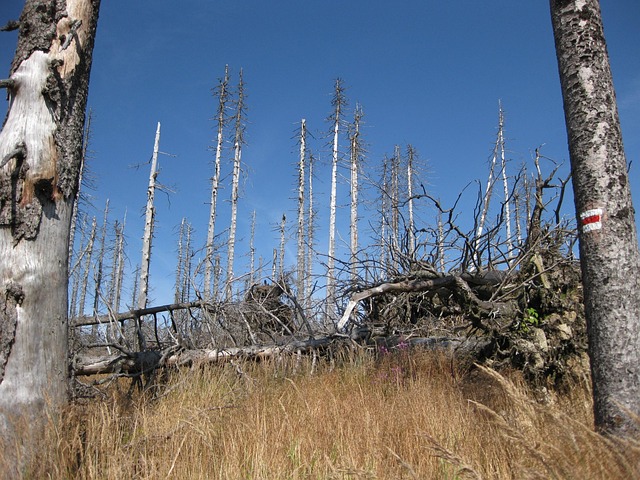As we traverse through the complexities of our environment, one term we often hear is “acid rain.” This phenomenon, while sounding benign, holds profound implications for the health of our planet and reveals a deeper connection to the escalating consequences of climate change. Understanding the roots and repercussions of acid rain can evoke a sense of urgency that each of us can relate to, given our shared responsibility for nurturing the Earth.
Acid rain, formed when pollution from industries and vehicles releases sulfur dioxide and nitrogen oxides into the atmosphere, combines with water vapor, resulting in acidic precipitation. This type of rain can devastate ecosystems, acidifying soil, lakes, and rivers, altering the living environment for countless species. Imagine the pristine waters of a lake suddenly turning hostile to fish and aquatic life, all because of our collective negligence towards emissions and industrial waste. The once-vibrant ecosystems become barren, paving the way for a ripple effect that alters biodiversity and the balance of nature.
The connection between acid rain and climate change is palpable; as the globe continues to warm, our weather patterns shift, increasing the frequency and intensity of rainfall in certain areas. This means more acid rain, leading to further degradation of our forests and aquatic systems. Trees suffering from nutrient depletion due to acidified soil become more susceptible to pests and diseases, compounding the ecological challenges we face. Our forests, which serve as essential carbon sinks, are under siege, impairing their ability to mitigate the very climate change we fear most.
Moreover, the impact of acid rain extends beyond the environment; it places significant stress on human infrastructures. Buildings and monuments, especially those made of limestone and marble, are corroded, resulting in economic implications as communities face the financial burden of repairs and restorations. When we witness beloved historical structures deteriorating, we are reminded of the delicate balance between human activity and environmental health.
Acid rain is more than just a scientific term; it’s a manifestation of our ecological footprint. Each time we take a step towards reducing our emissions—be it driving less, utilizing renewable energy sources, or advocating for stricter regulations—we contribute to alleviating this distressing consequence of climate change. Individual actions, when multiplied across communities, have the power to combat the insidious effects of acid rain.
As we delve into the heart of environmental issues, the narrative of acid rain offers a window into the realities of climate change. It underscores the interconnectedness of our choices and their ramifications on the natural world. This is not just an environmental concern; it’s a call to action for everyone who inhabits this planet. Together, we can strive to reverse the damage, restore our ecosystems, and secure a sustainable future for generations to come.
Each raindrop should remind us of the fragility of our environment and the immediate need for collective stewardship. Imagine a world where rainfall invigorates life rather than endangers it—a world we can still achieve, but only if we take decisive action today.




